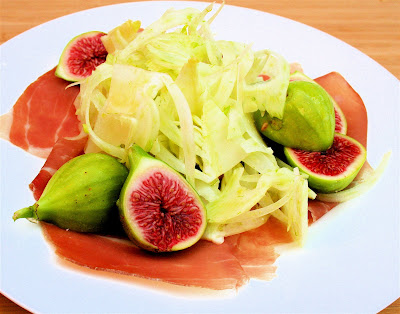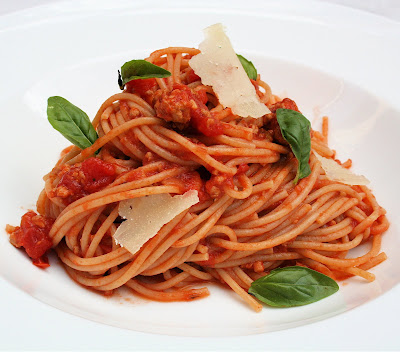 So, it finally feels like fall outside, which is great, although my apartment feels like an icebox. Phil, my lanlord, won't turn on the heat for weeks, so I guess I better get used it. My neighbor upstairs has been roasting a turkey all day just to heat up his apartment. Fortunately, I won't have to take such extreme measures — I have quarts of this spicy, pumpkin soup on hand. Although this soup hardly resembles the pumpkin soup I first became addicted to — ABP's, served in a bread bowl — pumpkin soup in any form always reminds me of college and of fun trips out to eat with roommates and teammates when the dining hall's fare just wouldn't cut it. I love pumpkin soup.
So, it finally feels like fall outside, which is great, although my apartment feels like an icebox. Phil, my lanlord, won't turn on the heat for weeks, so I guess I better get used it. My neighbor upstairs has been roasting a turkey all day just to heat up his apartment. Fortunately, I won't have to take such extreme measures — I have quarts of this spicy, pumpkin soup on hand. Although this soup hardly resembles the pumpkin soup I first became addicted to — ABP's, served in a bread bowl — pumpkin soup in any form always reminds me of college and of fun trips out to eat with roommates and teammates when the dining hall's fare just wouldn't cut it. I love pumpkin soup.This recipe has been adapted from one I saw recently on Heidi Swanson's 101 Cookbooks.com. Almost any winter squash can replace the pumpkin, and when I make this soup again, I will use a red kuri squash or a hubbard squash, the varieties that a woman at the Fair Food Farmstand recommended I use. (While I was shopping, I was determined to use only pumpkin for my pumpkin soup.) I did, however, roast a red kuri squash next to the pumpkins to compare flavors, and ultimately found the red kuri squash to be tastier than the pumpkins. But for a recipe like this, with lots of added seasonings — Thai red curry paste, coconut milk, ginger — a more mild-tasting squash such as a pumpkin works fine.
Next pumpkin recipe: Pumpkin Ravioli with Crispy Sage and Brown Butter Sauce ... so yummy!
 Thai-Spiced Pumpkin Soup
Thai-Spiced Pumpkin SoupYield = 2½ quarts
2 sugar pumpkins*, about 2 lbs. each
olive oil
kosher salt
1 tablespoon butter
1 medium onion, roughly chopped diced
1-inch knob ginger, peeled and roughly chopped
2 cloves garlic
2 tablespoons Thai red curry paste
1 can unsweetened coconut milk, (13.5 oz.)
cilantro, optional
spiced pumpkin seeds, optional
*Winter squash such as Hubbard, red kuri or butternut make fine substitutes for the pumpkin. Two sugar pumpkins yield about four cups of flesh.
Preheat the oven to 400ºF. Cut each pumpkin in half, scoop out the seeds and discard. Drizzle about a teaspoon of olive oil on a baking sheet. Season inside of pumpkins with salt and place cut side down. Roast for about 45 minutes or until a knife inserts easily through the skin into the flesh. Remove from the oven and let cool completely.
Meanwhile in a medium-sized saucepan, melt the butter. Add the onion and ginger and cook over medium heat until translucent and tender, about five to 10 minutes. Season with salt to taste. Add the garlic and sauté for a minute longer. Add four cups water, one tablespoon of the curry paste, the coconut milk and one teaspoon of salt, and bring to a boil.
When the pumpkin has cooled, scoop out the flesh and add to the pot (there should be about four cups of flesh). Return mixture to a boil and let simmer 10 minutes. Using an emersion blender, purée the mixture until smooth. (Alternatively, transfer to a blender or food processor and blend until smooth.) Taste mixture, adding more salt if necessary and the remaining tablespoon of curry paste if desired. Return to stove to heat through if serving immediately, or let cool completely before storing. Serve with chopped cilantro and spiced pumpkin seeds.
 Sweet & Salty Pumpkin Seeds
Sweet & Salty Pumpkin SeedsYield = 1 cup
¼ cup sugar
½ teaspoon kosher salt
2 teaspoons canola oil
1 cup pumpkin seeds
Combine sugar and salt in a large bowl. Set aside. Pour oil into a nonstick sauté pan and turn heat to high. Add nuts. Sauté until nuts begin to pop violently. After three to four minutes, when half of the nuts have turned golden brown, turn off the heat, transfer nuts to the bowl with the sugar-salt mix, and toss to coat. Transfer nuts to a fine mesh strainer and shake excess any coating off. Line a sheet pan with foil and spread nuts across it to cool completely. Store in an air-tight container.

































